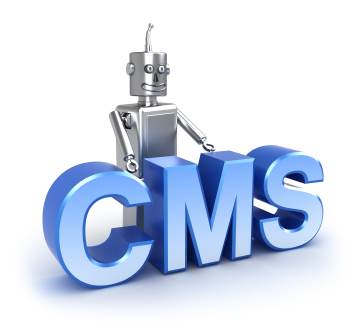
by Marelise da Silva | Sep 3, 2014 | Website Design, Website Development
There are many different ways to implement a social media marketing strategy. While many businesses focus on growing their online communities organically through shared content, likes and retweets, many companies are realising the benefits of paid advertising.
In the SEO world, paid advertising generally refers to Pay-Per-Click campaigns. In social media, Facebook advertising is where the real impact lies. What makes Facebook advertising such a worthwhile venture is the fact that you target your ideal customer with ease.
With PPC, for example, you’ll be able to appear on the first page of Google when someone types a relevant search term into the search engine, but Facebook has taken this segmentation to a whole new level. You can choose to target anything from location, interests and gender to life events, likes (such as brand connections) and the apps the person uses.
No other paid search strategy has this many options, which is why Facebook is particularly useful for marketers and business owners. Besides being able to target specific users, marketers can also create “custom audiences” for the advertising campaigns. These audiences comprise clients that your company already has a relationship with. The real benefit of this is that you can use e-mail addresses, phone numbers, Facebook contacts or even transfer your Google+ contacts to Facebook to set up these audiences.
After you’ve set up your target audience and custom audience, you can even create a “Lookalike” audience that lets you target new audiences who have similar characteristics to the audiences you’ve already created.
These features are all unique to Facebook, making it one of the most relevant platforms to advertise on. If you need help with your social media marketing strategy, contact us today.
by Marelise da Silva | Feb 26, 2014 | Website Design, Website Development
Web design is not just about designing a website; it’s about making a customised product that will add value to your brand and facilitate the achievement of your business goals. Your customers need to understand exactly what you are offering them and why they should choose you – and not your competitor.
Three reasons why you should opt for a professional web designer:
- Functionality
The two central elements to any business is the interaction between the buyer and the seller. The buyer needs a functional platform where they can buy the product and the seller needs a reliable, attractive platform off which to sell it. A professional designer will take both of these aspects into account to create a smooth-functioning product that keeps customers coming back for more.
- Accessibility
This is another field where a professional web designer comes in. By designing your website in a way that it is accessible by the diverse range of Internet enabled devices available today ensures that your clients are able to easily connect with you. The easier it is for them to achieve this, the more likely it is that they will return time and again. Professional designers with expertise in responsive web design will be able to ensure a smooth user experience on smartphones, tablets, desktops and laptops.
- Efficient and effective
This is one of the most important parts of web design, as a slow, cluttered website is incredibly off-putting to online consumers who will quickly move on to your competitors. A professionally designed site will load quickly on any device, be navigated with ease and contain all the relevant information a customer could want.
WSI offers website design services that will satisfy all these requirements and more. Contact us today for more information!

by Marelise da Silva | Feb 19, 2014 | Website Design, Website Development
As it is the beginning of a new year, it seems like a great time to take a look into our website design crystal ball and predict what will be the hot trends for 2014!
Our list of web design trends for 2014:
This is probably the popular trend in website design. The idea here is to embrace the qualities of the 2D look and shed the drop-shadows and heavy textures that try to make websites look more three-dimensional. The use of tiles as opposed to the more classic-looking buttons allows for users with touch screen devices to select the links they want easily – and stylishly.
Only some websites have previously succeed in mixing and matching several fonts on a single site or page, but some font styles mix beautifully and web-designers say that this will be a popular way to design in 2014.
This trend is as simple as it sounds. The idea is to eliminate the uncalled-for clutter that occurs on so many websites. The trend now will be to put all the most relevant content on one page where users can infinitely scroll instead of skipping from page to page.
These days, less is more and this is influencing web designers to cut back on text and design and instead opt for only maximum impact content. The need for more mobile-friendly websites will also continue to grow in 2014, as more and more people surf the web on their tablets and smartphones.
This year, let our team at WSI take the responsibility of creating a website design that best fulfils your needs, leaving you free to focus on your core business goals. Contact us today!

by Marelise da Silva | Dec 4, 2013 | Website Design, Website Development
This is the question that seems to be on more and more people’s lips. Simply put, it is when the design of websites respond to different screens’ dimensions. Websites that are built to be very responsive will be able to intuitively take note of the width and height of the screen. It will then adjust the web page layout accordingly to best fit the viewable area.
Even though responsive web development is mostly used in web layouts, responsive design can also go well beyond mere layouts. It is achieved by using code which is referred to as media queries. It allows developers to easily create web pages that are entirely independent of the viewable area.
Why it matters
If you’re looking to give your users a great online experience, then responsive website design becomes of value, especially with the smartphone and tablet wars currently raging in the marketplace. More and more people will be accessing the web from different platforms so you should provide them with the best web experience possible.
Here are a few ways responsive web development will help you to achieve this:
- Seamless user experience: Instead of having to develop individual websites for different screen resolutions, the responsive design will allow you to target all of the different dimensions. This will deliver a fantastic user experience that will display beautifully on any device.
- PPC and SEO benefits: Google’s page on ‘Building Smartphone Optimised Websites’ actually recommends using a responsive website design above other development methods. A single URL will help Google to assign indexing properties for the content while at the same time reducing load time, all of which will benefit your SEO and PPC efforts.
These are only a few ways in which responsive web development is leading the way forward in website design around the world. Contact WSI OMS for affordable and reliable web design today.

by Marelise da Silva | Mar 22, 2012 | Website Development
Your ecommerce website won’t be successful if it looks good, but lacks usability. Your web design should ensure that visitors on your site can find what they are looking for with ease, whether it’s information or products. If your website doesn’t draw attention and facilitate easy shopping, people will buy the products elsewhere.
Five tips for designing easy-to-use ecommerce websites
- Keep it simple: Your web design layout should be simple and self-explanatory so that visitors and potential customers know exactly what you’re offering. If you want your website visitors to keep coming back, make sure they can add products to their online shopping basket with ease.
- Navigation menus: Designing an ecommerce website requires a different approach to navigation menus than other websites. With ecommerce sites, the top navigation menus are usually dedicated to product categories. At the bottom of the page, you can have small text links that will take visitors to the About Us Page, Terms & Conditions Page, Shipping Agreements Page and other technical information pages. It’s also a good idea to have a link to the home page at the bottom of every single product page – this will help people navigate the site if they get “lost” amongst your products and categories.
- Loading time: Visitors and potential customers can easily be put off by slow loading websites. This is also a particular hassle for ecommerce websites, because it can lead to problems on payment processing and shopping cart pages. To prevent this, keep your web design simple.
- Categorise: Some customers will be looking for specific brand names while others might be interested in the least expensive products. If your web design makes it easy for customers to browse products by brand, new releases and other relevant categories, it will help them find what they’re looking for within a short amount of time. This type of category planning should be done before you start the web design process.
- Checkout: Visitors and customers won’t return to your website if your web design layout doesn’t provide a smooth checkout procedure. Stick with one or maximum two pages for the checkout procedure.

by Marelise da Silva | Jan 13, 2012 | Website Development
Creating a website from scratch using HTML and CSS coding is all good and well for the experts or those people that have time, but for newbies to the web design world or people without a lot of time, a content management system (CMS) can make a huge difference. A CMS is a programme that helps you create, organise, store and link all the elements (pictures, pages, sounds, etc) of a website – without having to fiddle with any actual coding.
Free CMS are available online
There are a number of free CMS’ available for download. These have been around for some time and are the tried and trusted programmes of many a professional web designer.
- Joomla is perhaps the most well-known CMS out there. It is easy to use and allows you to create web pages and web applications. As open source software, the community attached to Joomla also gives you access to Joomla experts who can give you a lot of advice and guidance.
- Drupal is second to Joomla and is used by millions of people and communities to power their websites. Easy to use with customisable templates, Drupal allows you to create design a simple website in a matter of minutes without any hassle.
- SilverStripe is another open source CMS that allows users to create an entire website in a matter of minutes. The online community offers a variety of templates, applications and other add-ons to make any web designer’s dreams come true.
- WordPress is not technically made for websites, but is a powerful CMS for creating and maintaining blogs of all kinds. WordPress allows users to upload blogs, change styles, manage comments and much more – all from a simple interface that is easy to use.
These are just some of the CMS programmes available online at no charge. Most of these programmes are open source and have a bustling community behind them making changes and enhancing the capabilities on a daily basis. For anyone new to web design, these CMS programmes are the perfect place to start.
Want a truly unique website, but don’t want to mess with CMS or other website builders? Contact WSI for web design in South Africa.






